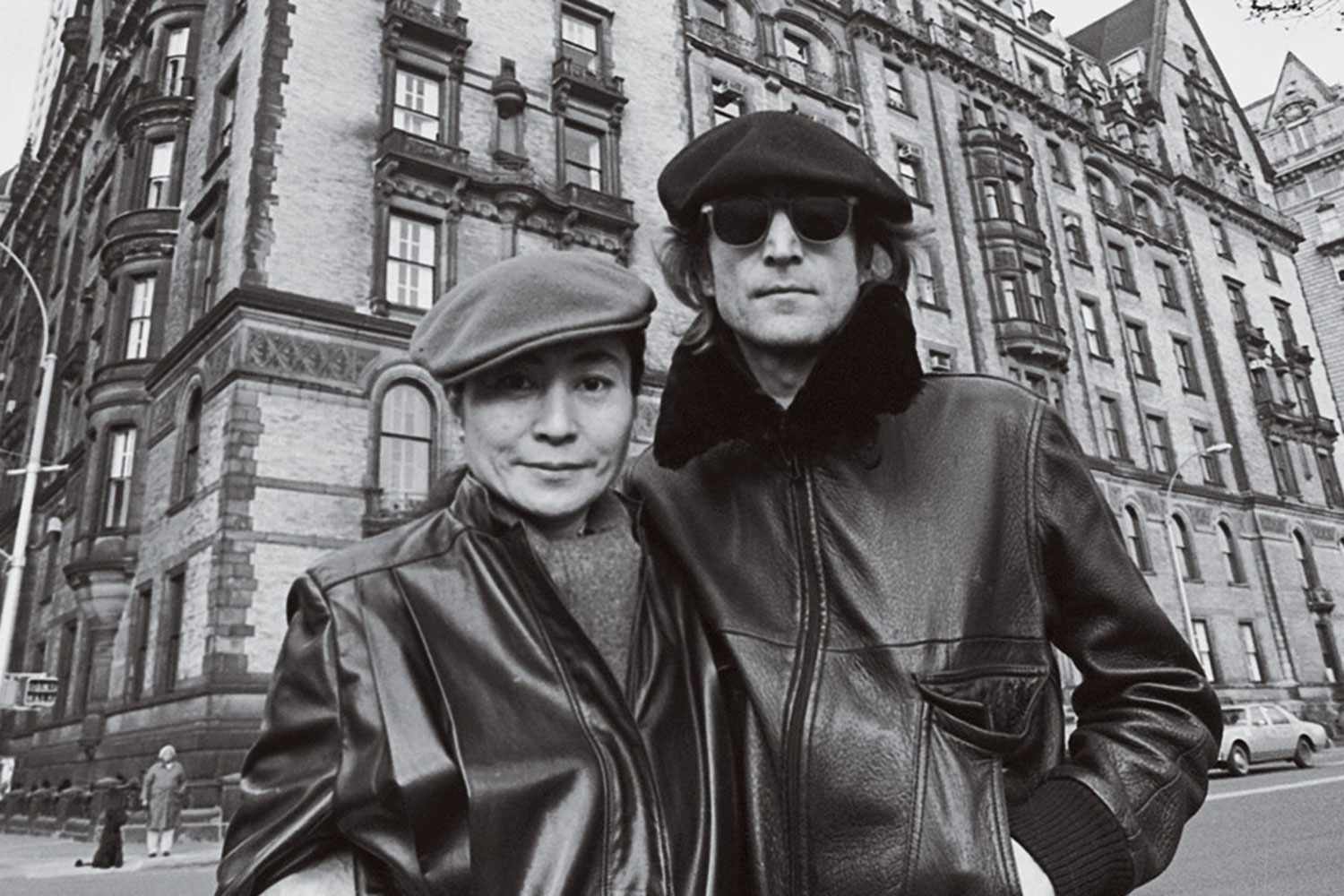Inside John Lennon’s Last Birthday and the Strange Saga of His Lost Gift from Yoko Ono

In the summer of 1980, John Lennon recorded a demo of a new song he’d written called “Life Begins at 40” in his expansive apartment complex at New York City’s Dakota building. With its title borrowed from the classic self-help book, the playful hoedown, delivered in a comical southern twang, opened with the couplet:
“They say life begins at forty and age is just a state of mind / If all that’s true, you know that I’ve been dead for thirty-nine.”
Lennon earmarked the tune for his former bandmate Ringo Starr, who became the first Beatle to cross the threshold into the decidedly mature new decade that July. But Starr would never record “Life Begins at 40.” The tongue-in-cheek track was tainted by tragedy when Lennon’s own 40th on Oct. 9 turned out to be his last birthday. Two months later, he would be dead — murdered outside the Dakota, just yards from the spot where he sang optimistically about the years he’d never get to see.
The song came during a period of renewed creativity for Lennon, who’d spent much of the previous five years in his self-proclaimed “house husband” phase. Stepping back from his career, he focused on raising his son Sean, coincidentally also born on Oct. 9. (“We’re almost like twins!” Lennon would later say.)
The man who’d entered the ‘70s on the front line of the cultural and political revolution alongside wife Yoko Ono spent the second half of the decade watching Sesame Street, baking bread and feeding his cats. Lennon had, quite literally, tuned out of the pop music scene, shunning Top 40 radio in favor of easy listening or classical stations. He even allowed his record contract to lapse. For the first time since before he was a Beatle, he wasn’t obligated to make music for anybody — so he didn’t. For years, his guitar hung over his bed like a memento from a past life.
But Lennon’s muse returned as the ‘70s came to a close, and by the fall of 1980 he was hard at work on his first new album in five years. Called Double Fantasy, his rejuvenated spirit was apparent on the lead single, which had become a sort of mission statement for the project: “(Just Like) Starting Over.”
Lennon began his last birthday at The Hit Factory recording studio, where he worked through the night finalizing mixes for Double Fantasy, which was due out the following month. A photo of Sean hung over the recording console, taped there by Lennon at the start of the session for both encouragement and security. This was the first time he’d gone “back to work” since the boy was born, and the separation was hard. When Lennon left the same studio on the night of Dec. 8, he decided to curtail dinner plans so he could tuck his son in for bedtime. A gunman would fire four shots into his back and shoulder before he made it inside.
When the mixing session finally ended at dawn, assistant engineer Jon Smith provided an illicit birthday surprise for his superstar client by furtively slipping a joint into Lennon’s jacket pocket, onto which he’d merrily written “Happy Birthday.” When Lennon eventually found it, he freaked. Still traumatized by a bitter multi-year immigration battle, he was convinced that pot had been planted on him by the FBI as a frame job to get him deported. To play it safe, Lennon flushed it down the toilet — much to the disappointment of the well-meaning Smith. “I felt terrible, but it was a really good joint,” he’d later say. “He would have enjoyed it.”
As the city woke up, Lennon shared a birthday surprise of his own by issuing a press release touting a tour of the US, Europe and Japan the following spring. His first proper trek since gigging with the Beatles in 1966, the shows would give a new generation of fans a long-awaited chance to see him perform.
The news added to the excitement among the ever-present crowd of fans gathered outside the imposing Gothic facade of the Dakota. Their ranks had swelled in number that day for the occasion, and the feeling was extra exuberant. Two women unfurled a handmade “Happy Birthday” sign made of sheets onto the sidewalk, in hopes that Lennon would be able to read it from his apartment.
Up on the seventh floor, Lennon was enjoying more private birthday wishes. The family gathered in their kitchen for a dual party for both John and Sean, who was turning 5 years old. As the birthday boys blew out the candles on their joint cake, Lennon donned a homemade hat made from a grocery bag and construction paper. It lent some festive flair to his otherwise nondescript denim shirt and jeans. Polaroids and home movies were taken, and the scene they depict looks charmingly normal — one that could have played out in any ordinary suburban home.
The gifts Lennon received from Ono, however, were a little more exclusive. Case in point: A lapel pin in the shape of the American flag, studded with rubies and diamonds. It was a tribute to Lennon’s adopted homeland following a hard won immigration battle, and possibly a good luck token for the following year, when he qualified to apply for American citizenship. Rumored to cost upwards of $75,000 (or $287,000 in 2024), the pin was likely purchased 15 blocks downtown at Tiffany & Co.
It was here that Ono bought another gift for her husband: a yellow gold Patek Philippe 2499 wrist watch. Lennon was hardly a “watch guy,” but this was an impressive way to start a collection. Both exceedingly rare (only 349 were produced between 1952 and 1985) and technologically advanced (it boasted the only perpetual calendar chronograph small enough to fit into a wristwatch at the time), the Patek 2499 has been cited by experts as the most sought after model of the storied brand.
At just $25,000 (or $95,500 today) it was practically a steal. In December 2020, a Patek 2499 sold at auction for an eye-watering $818,600 — and that one wasn’t Beatle-affiliated.
Less opulent was the plate of plastic sushi Ono served him as a gag-gift, but another present appealed to Lennon’s sentimental side. It was a black and yellow striped tie that she’d knitted herself, a loose copy of the one he wore as part of his uniform at Liverpool’s Quarry Bank High School as a teen.
Ono’s final gift for her husband and son was slightly more abstract, but no less heartfelt. She hired five skywriting planes to inscribe the phrase “Happy Birthday John and Sean, Love Yoko” nine times (John’s lucky number) in thousand-foot letters over Manhattan. The gesture was likely a nod to the early days of their courtship, when Ono sent Lennon postcards with poetic sayings like, “I’m a cloud. Watch for me in the sky.” At a cost of $3,000, the planes were considerably more than a stamp.
Sadly, though it made the local newscasts that night, Lennon himself missed the event. When the planes took flight at 3:30 that afternoon, he was reportedly taking a nap to recover from the all-night studio session and unable to be roused. Sean, however, was taken to the Dakota roof to watch the display.
At some point during the day, Lennon was visited by his friend Bob Gruen, the legendary photographer who chronicled the New York City rock scene. He took a few impromptu portraits of Lennon proudly displaying his birthday gifts. The photos show him grinning widely, shades on, with the flag pin clipped to Ono’s tie knotted loosely around his neck and the Patek 2499 clasped to his wrist.
Gruen’s three shots — believed to have been taken at The Hit Factory studio — are the only known photos of Lennon wearing the timepiece, which earned an almost mythic reputation among music historians and horologists after his death. In the days following the murder, all of Lennon’s possessions were meticulously cataloged in a thousand-page inventory and placed in storage, chiefly in the warren of apartments that Ono retained at the Dakota. For decades, that was where most assumed the Patek to be. Ono herself believed it to be safe in a cupboard inside a locked room deep within her home.
Then one day in September 2014, Ono’s attorney received a call from a Swiss branch of Christie’s auction house informing her that a man had contacted them with the intent to sell the watch. The message was relayed to a surprised Ono, who rushed to the cupboard and realized for the first time that the watch, a token of love for her husband on his last birthday, was no longer there.
The discovery kicked off a legal battle that is still ongoing more than a decade later, with Ono filing a claim in October 2015 to get the watch back. She professed to have no idea when it was removed from her home or who could have taken it, but suspicion eventually fell on Koral Karsan, who had worked as Ono’s chauffeur and a trusted member of her inner circle for over a decade. Their relationship ended catastrophically in 2006 when Karsan was arrested for trying to extort $2 million from Ono by allegedly threatening to release embarrassing audio tapes and photos that he secretly recorded, and even warning that he would kill her and Sean. According to a report in the New York Times, Karsan defended himself in court by claiming that he and Ono had a sexual relationship, and that she “humiliated and degraded him, wrecking his marriage and making him so nervous that he ground eight of his teeth to the bone.” (Ono would deny all such accusations and assertions.) He would ultimately plead guilty to a lesser charge and was deported to his home country of Turkey.
It seemed like the matter was settled until a decade later, when evidence surfaced that suggested Karsan had stolen Lennon’s property from Ono. In 2017, a Berlin-based auction house called Auctionata went bankrupt, and as authorities culled through their assets, they discovered 86 items of Lennon’s personal property, including eyeglasses and diaries. These items were traced back to a man identified as Erhan G., who claimed that he’d acquired these items from Karsan — in addition to the Patek 2499, which Auctionata sold privately to an Italian collector living in Hong Kong. The Italian collector —who self-identifies as “more of a Rolling Stones man” — then attempted to sell the watch through Christie’s auction house, who then alerted Ono as part of their authentication process.
The watch is now at the center of an ongoing lawsuit — the intricacies of which are documented in a 2024 New Yorker piece by Jay Fielden — to determine its rightful owner. The Italian collector, known in court proceedings only as the noir-ish “Mr. A,” insists that he bought it legally, claiming that Kasan was gifted the watch by Ono as an expression of gratitude for his years of service to her. Ono’s camp maintains it was stolen by Kasan, who was one of the few in Ono’s employ to have full access to the Dakota apartments, including the rooms where she kept Lennon’s most precious personal items. With the case now in its final appeal, the Swiss Tribunal Fédéral is expected to share their verdict later this year.
For the last decade, Lennon’s Patek 2499 has sat in an undisclosed location in Geneva. During the trial, Ono presented evidence valuing the watch between $2 million and $4 million. Many believe this to be a lowball estimate. Some experts theorize that given the historical significance, it could potentially sell for 10 times that amount. As dealer Eric Wind told Hodinkee, “It’s possibly the most valuable wristwatch on Earth.”
Since the case began, Ono has retired from public life and left the Dakota for an estate she and Lennon purchased in upstate New York. She’s declined interviews for years, but Sean has spoken passionately on the matter. “It’s important that we get [the Patek 2499] back because of all we’ve gone through over it,” he told the New Yorker this year. “I’m not a watch guy. I’d be terrified to wear anything of my dad’s. I never even played one of his guitars. To me, if anything, the watch is just a symbol of how dangerous it is to trust.”
The stolen watch is also a poignant symbol for a man who had so much time stolen from him. The songs Lennon recorded in his last months are brimming with hope and faith in the future. “Wasn’t the ’70s a drag?” he cracked in his final interview, recorded just hours before his murder. “Here we are — let’s try and make the ’80s good, ya know?!” How cruel that the man who so gleefully sang “Life Begins at 40” should have his own life end at 40.
The trial uncovered the first detailed photos of the Patek 2499, revealing an inscription on the back that was previously unknown to fans. The message from a wife to her husband is revealing — and it’s far more than a song title.
(JUST LIKE)
STARTING OVER
LOVE YOKO
10 • 9 • 1980
N. Y. C.
Source: People
Related Posts
- Roundball Rocked: With NBA Return Looming, NBC Purges Scripted Roster
- SoundCloud Says It “Has Never Used Artist Content to Train AI Models” After Backlash on Terms of Service Change
- Fox News’ Camryn Kinsey Is “Doing Well” After Fainting on Live TV
- Kerry Washington and Jahleel Kamera in 'Shadow Force.'
Courtesy of Lionsgate
…
- This Alternative Artist Landed a Top-20 Chart Debut With an Album Made Almost Entirely on His Phone





